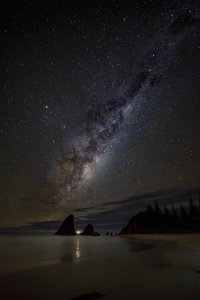I'd pay with my own organs to see a 50 f1.4 from Canon after 30 years

but I'm starting to feel they will never EVER release a new one, because they probably are scared that the f1.4 will eat 90% sales of the f1.2 version (for just 1/3rd of a stop darker you'll likely pay from half to two thirds less money for a f1.4 vs the actual f1.2), so they probably prefer to sell (relatively) very few of the f1.2 but for a double/triple price.
Lucky for us there's the Sigma Art we can adapt, that is spectacular for the money (and today I'm pretty sure you'll find it used in the 400/450€ range), as the old EF version (I had it) was a nightmare, really soft and without a hint of contrast up to f4, were also the f1.8 was already as good, so no reason to buy the first one.
I shot a huge number of shots with the EF50/1.4. I miss a 50/1.4 for RF. I'm not alone. Canon's not stupid. Why don't they make one? Here's my guess.
The famed double-gauss design just CANNOT be improved much. None of them have ever been and despite modern materials and design software I don't think there's going to be a massive improvement EVER. Even the RF50 is quite similar in performance to the EF50/1.8 released in 1987, which itself was probably similar to the preceding FD's.
Now, optic software CAN design highly-corrected 50mm's, but they're relatively huge, and complex, and therefore cost a bomb. The Leica APO-ASPH 50/2, Otus 50/1.4, and Canon RF50/1.2 are all of this school. I think the Sigma Art 50/1.4 is too?
If Canon basically made a slightly-tweaked EF50/1.4, its going to be very similar to the RF50/1.8. Not high resolution, not highly corrected. With today's IBIS and ultra-low-noise sensors, we're no longer gagging for the extra 2/3 stop. I used to hand-hold in restaurants 1/30 on 1600 speed film at 1.4 and it was horribly grainy AND had camera-shake blur AND the low IQ we expect at the biggest apertures. Today I'd do the same shot at 1/50 with IBIS at 10k with maybe even f/4 and the noise is practically invisible. Meanwhile, with the ultra-low noise and exacting autofocus and low hand-shake, subjects are so sharp compared to the background, that f/1.8 or even f/4 actually has sufficient power to really make the subject pop out of the background in the way a cell phone photo doesn't. In the past the focus was off, the resolution was low, the camera was moving, and so the subject was already pretty soft and you needed a big aperture to make the background yet softer and get that "pop" feeling (of the subject being quite separate from the background). I don't think anyone wants such a lens, do you?
If Canon basically made a down-sized RF50/1.2, its going to be very similar to the RF50/1.2. It'd still have the same number of elements or close to it. Design and assembly would be comperable cost. Sourcing the pieces might be a little cheaper but nut hugely. So the resulting lens is going to be nearly as big, nearly as heavy, nearly as expensive, and be 1/3 stop down. There is SOME room to differentiate it: it could have less vignetting (or more, though that's hard to imagine!), IS, maybe be a bit less corrected and lower resolution. But again, it's still not really compelling. The 50/1.2 is hella expensive, but buy one used and sell it used and it shouldn't cost you too much per year to own, in between. How much cheaper would an f/1.4 version of the same lens be?
I don't really follow all the MTF sites so if I'm misunderstanding other 50mm's of the last 20 years please correct me!

